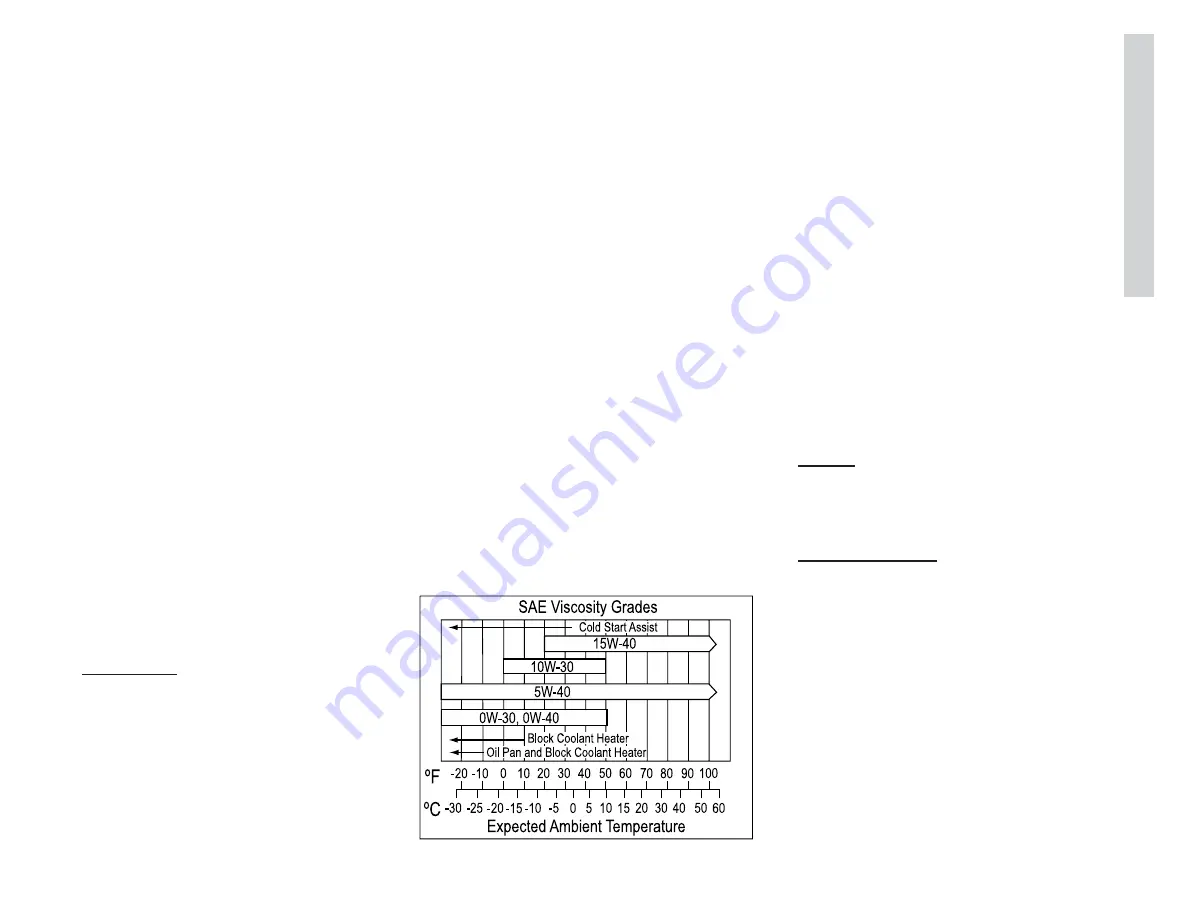
209
C
ha
ss
is
- 1
0
2012 Trip
Tips:
When operating below 32º F, the block
heater preheat can enhance engine
starting by easing cranking and helping
to prevent engine misfire and white
smoke during starting.
Always follow the recommended oil,
fuel, and coolant specifications as
outlined in the OEM engine manual.
Proper oil viscosity and coolant
concentration eases engine starting and
helps to avoid engine damage.
Allow the engine to idle until it
sufficiently warms for operation.
Utilize the fast idle feature to quicken
the process. Wait to operate the
motorhome for at least three minutes
or until the coolant temperature begins
to rise.
Check the air inlet and air filter daily,
or as necessary, when driving in snow
conditions.
The demand on batteries increase
during winter; check and service the
batteries frequently to help ensure
trouble-free starts.
Start out slowly with the motorhome
to allow the transmission and axle
lubricants time to circulate and warm
before putting them under full load.
WARNING:
Do not use ether cold starting additives
to start the engine, damage could
occur.
engIne oIl
Engine Oil Requirements:
Engine oil types and recommended change
intervals are determined by the engine
manufacturer.
This information is listed in the OEM engine
operation & maintenance manual located in the
owners information file. Oil recommendations
for the engine are due to emission
requirements. Low emission engines have
higher combustion chamber temperatures, use
ultra-low sulfur fuel and are equipped with a
diesel particulate filter.
A high-grade 15W-40 multi-viscosity
heavy duty lubricating oil meeting American
Petroleum Institute (API) specification
CJ-4 is recommended. Lower viscosity oils
designed for use in winter operations will aid
in starting. Refer to the chart for oil viscosity
recommendations based on ambient operating
temperatures. A critical factor in maintaining
engine durability and efficient emission system
operation is through use of high quality, multi-
grade lubricating oil and strict adherence to the
maintenance service intervals as specified by
the engine manufacturer.
A straight weight or mono-grade lubricating
oil is not recommended. Lubricating oil
meeting API CI-4 may be used but with
shortened drain intervals. Use of API CI-4 also
increases soot loading of the diesel particulate
filter.
The use of an oil analysis program to extend
oil drain intervals is not recommended.
Synthetic oils such as API category II or III
specifications may be used in extreme cold
temperatures as long as they are approved by
the engine manufacturer. Synthetic oils, or oil
with adequate low temperature properties used
for Arctic operations where the engine cannot
be kept warm when shut down, will aid in
starting. The use of synthetic oils should not
be used to extend drain intervals. Extended
oil change intervals can decrease engine life
and possibly affect the engine warranty and
emission systems.
Oil additives should not be used unless
the oil supplier or oil manufacturer are
consulted and provide positive evidence or
data establishing satisfactory performance in
accordance with the engine manufacturer.
NOTE:
The Engine is filled with SAE 15w-40
API CJ-4 multi-viscosity oil from the
factory.
INFORMATION:
Refer to the OEM engine Operation
and Maintenance manual for
information regarding recommended
oil change intervals.
engIne SHUtDoWn
Allow the engine to idle three to five
minutes after a full load operation. This allows
adequate cool down of pistons, cylinders,
bearings and turbocharger components. Under
normal driving conditions, exiting the highway
is generally lighter engine operation and
the need for the three to five minutes is not
necessary.
Lubricating oil recommendations and specifications.
070201b
Summary of Contents for Trip 2012
Page 1: ...2 0 1 2 B YHOL I D A YR A MB L E R O w n e r s Ma n u a l...
Page 13: ...Notes...
Page 45: ...40 Driv ing Safety 2 2012 Trip Weight Record Sheet...
Page 51: ...46 Driv ing Safety 2 2012 Trip Notes...
Page 138: ...133 W ater Sy stems 6 2012 Trip Water System Diagram 040487va...
Page 139: ...134 Wat er Sy stems 6 2012 Trip Notes...
Page 151: ...146 Pro p ane Sy tems 7 2012 Trip Notes...
Page 173: ...168 Ho us e Electr ical 8 2012 Trip Notes...
Page 190: ...185 Chassis Electrical 9 2012 Trip Engine No Start Flow Chart...
Page 191: ...186 Ch as s is Electr ical 9 2012 Trip Notes...
Page 237: ...232 Ch assis 10 2012 Trip Notes...





































